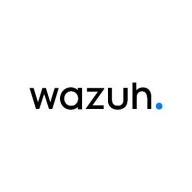

AlienVault OSSIM and Wazuh are prominent SIEM solutions. Users express higher satisfaction with Wazuh's feature set, making it appear superior despite AlienVault OSSIM's affordable pricing and reliable support.
Features: AlienVault OSSIM excels in network monitoring, incident response, and behavioral monitoring. Wazuh is praised for threat intelligence integration, host-based intrusion detection, and comprehensive monitoring capabilities. Users favor Wazuh's advanced features over AlienVault OSSIM's basic offerings.
Room for Improvement: AlienVault OSSIM users mention issues with scalability, better reporting tools, and asset discovery improvements. Wazuh users report challenges with configuration complexity, occasional false positives, and easier scalability options. Wazuh's complexity is a notable pain point for users.
Ease of Deployment and Customer Service: AlienVault OSSIM is praised for its straightforward deployment and responsive customer service. Wazuh's deployment is deemed more complex but offers effective guidance and support. Users find AlienVault OSSIM easier to deploy but value Wazuh's comprehensive service.
Pricing and ROI: AlienVault OSSIM is considered cost-effective with a solid ROI due to its low setup costs and effective use. Wazuh users see good ROI, justifying its higher upfront investment with advanced features and long-term benefits. Wazuh's superior feature set leads to better perceived value despite higher costs.


AlienVault OSSIM, Open Source Security Information and Event Management (SIEM), provides you with a feature-rich open source SIEM complete with event collection, normalization and correlation. Launched by security engineers because of the lack of available open source products, AlienVault OSSIM was created specifically to address the reality many security professionals face: A SIEM, whether it is open source or commercial, is virtually useless without the basic security controls necessary for security visibility.
Wazuh is an enterprise-ready platform used for security monitoring. It is a free and open-source platform that is used for threat detection, incident response and compliance, and integrity monitoring. Wazuh is capable of protecting workloads across virtualized, on-premises, containerized, and cloud-based environments.
It consists of an endpoint security agent and a management server. Additionally, Wazuh is fully integrated with the Elastic Stack, allowing users the ability to navigate through security alerts via a data visualization tool.
Wazuh Capabilities
Some of Wazuh’s most notable capabilities include:
Wazuh Benefits
Some of the most valued benefits of Wazuh include:
Wazuh Offers
Reviews From Real Users
"It's very easy to integrate Wazuh with other environments, cloud applications, and on-prem applications. So, the advantage is that it's easy to implement and integrate with other solutions." - Robert C., IT Security Consultant at Microlan Kenya Limited
“The MITRE ATT&CK correlation is most valuable.” - Chief Information Security Officer at a financial services firm
We monitor all Security Information and Event Management (SIEM) reviews to prevent fraudulent reviews and keep review quality high. We do not post reviews by company employees or direct competitors. We validate each review for authenticity via cross-reference with LinkedIn, and personal follow-up with the reviewer when necessary.